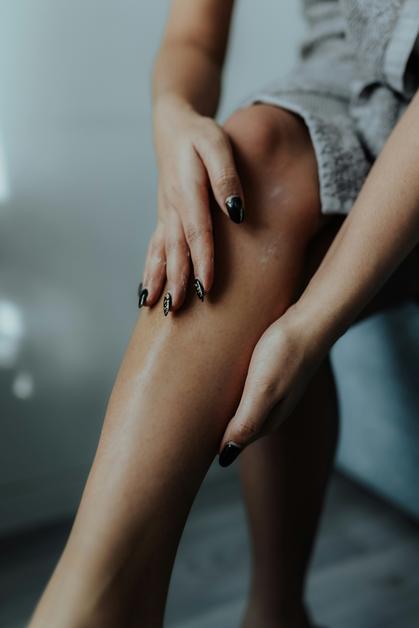Nestled at the heart of the pelvis, the pubic symphysis often operates in stealth—silent, unnoticed, steadfast. And yet, when irritation or discomfort emerges, this small joint can rewrite the script of daily life for parents, making every step, lift, or sleepless night with a restless child a test of resilience. For those juggling the demands of nurturing a family, pain at the pubic symphysis often sparks a cascade of questions: What drives that sharp twinge in the groin when climbing stairs? Why does turning in bed feel like wrestling gravity itself? Which habits soothe or aggravate the ache? And, most crucially, what can be done to restore comfort and mobility?
Understanding the anatomy, recognizing symptoms, and learning safe, practical strategies to protect the pubic symphysis brings relief and reassurance. Expect clear answers, science-based guidance, and empathetic insights—empowering you to navigate pregnancy, postpartum recovery, active parenting, and everything else family life delivers.
Anatomy of the Pubic Symphysis: The Unsung Connector
What lies beneath the skin, supporting the weight of your growing child and every stride taken through the park? The pubic symphysis—a tough but flexible bridge, crafted from fibrocartilage, forming the junction where the left and right pubic bones unite. Picture a slim, slightly springy pad, located just beneath the bladder. It acts as a shock absorber, resisting and redistributing pressure whenever you squat, pivot, or simply chase after little ones.
This joint is shielded by ligaments—think of them as sturdy seatbelts (specifically, the superior, inferior, anterior, and posterior ligaments)—and supported by neighboring muscles including the rectus abdominis, adductor longus, and gracilis. Nerves like the pudendal nerve and vessels such as the obturator artery weave in and around this crossroads, relaying signals about sensation and helping manage blood flow.
For those who carry pregnancies, the pubic symphysis becomes notably adaptable. Hormonal tides—particularly relaxin and estrogen—send signals that increase elasticity, making space for new life to enter the world. The interpubic disc often thickens, an evolutionary adaptation lending greater flexibility without sacrificing vital support.
How the Pubic Symphysis Supports Your Everyday: Function and Adaptation
Why does discomfort in this joint unsettle so many daily routines? The answer is rooted in its delicate balance: the pubic symphysis allows only minimal movement—just enough for walking, adjusting posture or cradling a toddler, not so much that it destabilizes the pelvis. When movement exceeds normal limits, or muscular support falters, pain often follows.
During late pregnancy, the body’s architecture shifts. Elevated relaxin loosens ligaments across the pelvis, heightening symphyseal mobility to ease childbirth, but sometimes tipping into instability. After delivery, levels decline, and the joint begins to regain its baseline firmness—a testament to the body’s astonishing design. Even outside pregnancy, repetitive strain, muscle imbalance, or unusual exertion can challenge pelvic harmony.
Spotting Trouble: Common Pubic Symphysis Issues
Not all pelvic discomfort leads back to the pubic symphysis, but several distinctive conditions do. Let’s unravel the signs and science:
- Symphysis pubis dysfunction (SPD): A frequent guest during pregnancy, this occurs when loosened ligaments allow the bones to shift a little too freely, causing sharp, localized pain in the midline of the pelvis or groin. Climbing stairs, stepping out of bed, or standing unbalanced can become daunting.
- Diastasis of the pubic symphysis: Here, the joint’s gap is stretched beyond its natural widening. This can result in palpable instability, sometimes paired with audible clicking or a strange grinding sensation.
- Osteitis pubis: Often linked to athletes or strenuous activity, this refers to an overload-triggered inflammation. The pain is more generalized, sometimes accompanied by tenderness and swelling.
- Rare culprits: Traumas such as falls, infections (bacterial arthritis or osteomyelitis), or degenerative changes—like osteoarthritis—are less common, but can bring severe symptoms.
Do risk factors matter? Rapid weight gain, former pelvic trauma, high-impact sports, multiple pregnancies or deliveries, and weak or imbalanced pelvic floor muscles can all tip the scales, making symptoms more likely.
Signs, Symptoms, and the Diagnostic Process
Pain at the pubic symphysis rarely slips by unnoticed. Parents often describe a deep, stabbing, or burning ache, surging when they move from sitting to standing, or swing a leg out of bed. The discomfort might radiate into the lower back, inner thighs, or hips—sometimes persistent, other times only flaring with specific movements. On occasion, a physical “click” or sense of pelvic “wobble” will raise a red flag.
When these sensations linger, medical evaluation is wise. Clinicians typically perform:
- Careful palpation to locate tenderness
- Testing for pelvic stability and muscular balance
- Imaging such as ultrasound (especially safe during pregnancy), MRI for detailed views without radiation, or—more rarely—X-rays, to check for major separation or subtle inflammation
Early intervention eases recovery and helps prevent a minor disturbance from becoming a lasting disruption.
Easing Pain and Regaining Control: Practical Strategies
Parents rarely have the luxury of staying still—children demand movement, flexibility, adaptability. So how can relief be found without pressing pause on life?
- Modify activities: Adjust routines to avoid wide stances, sudden twisting, or asymmetrical movements. Roll over, get up, and lift in one smooth flow, legs close together.
- Nighttime support: Placing a cushion or pillow between the knees during sleep can radically lower pelvic stress.
- Embrace pelvic support belts: These bands add a layer of external stability, bridging the gap while the joint heals.
- Engage in specific exercises: Physical therapists recommend gentle routines—focusing on deep abdominals, gluteals, and the pelvic floor (think Kegel exercises), adapted to real-life scenarios like picking up a child or loading a stroller.
- Thermal comfort: Alternating warmth and cool packs relieve local irritation.
- Safe pain management: Acetaminophen (paracetamol) is generally considered low risk, especially under professional supervision. Non-pharmaceutical options like osteopathy, myofascial therapy, or even acupuncture can bring significant ease.
- Nutrition matters: Ensuring adequate calcium, magnesium, and vitamin D intake helps maintain joint health—an often underappreciated element in a parent’s recovery arsenal.
Rarely, persistent and severe diastasis, non-healing fractures, or infection tip the scale toward surgical intervention, but for most, time and patience—paired with these practical steps—yield steady improvement.
Prevention: Building Pelvic Resilience
Prevention isn’t passive—small, conscious tweaks throughout daily life protect the pubic symphysis from unnecessary strain.
- Postural habits: Imagine a straight line through your spine, hips, and knees—this helps distribute weight evenly and keeps pressure off the joint.
- Change positions: Stagnant postures provoke tension—frequent shifts offer relief and encourage balanced muscular activity.
- Gentle movement: Low-impact activities like swimming, short walks, or prenatal yoga enhance circulation and stability without overloading the pelvis.
- Core strengthening: Start with basic bracing and gradually reintroduce more demanding exercises. Using a pregnancy or therapy ball while sitting builds subtle strength.
- Lighten loads: Prioritize and delegate lifting—muscular fatigue invites injury.
Nutrition deserves a second mention. A diet rich in minerals and vitamins underpins every aspect of musculoskeletal health, benefiting caregivers as much as the children they chase after.
Focus on Pregnancy: Diastasis, Instability, and Safe Recovery
During pregnancy, the pubic symphysis adapts—sometimes to extremes. Feelings of intense, shifting pain; difficulty rolling in bed; or new instability may point to a significant diastasis. What are the next steps?
- Relative immobilization: Combine a pelvic belt with strategic use of pillows for nighttime support.
- Mindful activity: Movements should be deliberate and symmetrical—ask for assistance if daily chores become daunting.
- Professional guidance: Specialized physical therapy and, in select cases, osteopathy support a gentler, more complete recovery.
- Healing timeline: Most parents recover within weeks or months, provided they embrace patience and avoid overly ambitious movement too soon.
High-Impact Sports and the Pubic Symphysis: Risks for Active Parents
Sports enthusiasts—soccer players, runners, martial artists—place unique demands on the pubic symphysis. Abrupt twists, lunges, or jumps can lead to microtrauma, inflammation, or in rare cases, more significant damage.
Simple but effective pre-activity rituals include:
- Proper warm-ups
- Slow progression of intensity
- Emphasis on pelvic stability
- Supportive shoes to absorb impact
Listening to one’s body and acting on persistent aches prevents future setbacks.
Forensic and Medical Insights: The Pubic Symphysis as an Age Marker
Beyond everyday function, the pubic symphysis tells stories—even to forensic specialists. Over the decades, cartilage thins, subtle ridges appear, the gap narrows. After childbirth, these changes may be permanent. This biological “record” assists in age estimation while underlining the incredible adaptability of the body throughout parenthood.
Key Takeaways
- The pubic symphysis is not merely a joint, but a linchpin—upholding pelvic integrity, absorbing daily stress, and flexing with the ebb and flow of family life.
- Pain or instability, though often disruptive, respond favorably to thoughtful movement, targeted therapy, and supportive devices.
- Recognizing symptoms early and adjusting physical habits accelerates recovery, while nutrition and effective exercise sustain joint health.
- Most situations improve with time, conservative care, and appropriate expertise; only rarely do severe or persistent issues suggest the need for surgical intervention.
- Personalized support makes all the difference. Reach out to healthcare professionals if uncertainty or persistent discomfort arises.
- For tailored advice, health questionnaires, and personalized tips for children’s well-being, explore the Heloa app—a friendly resource designed to accompany parents at every step.
Each parent’s journey is unique, and strengthening knowledge about the pubic symphysis equips families to navigate challenges with greater confidence and a sense of partnership in health.
Questions Parents Ask
Can men experience problems with the pubic symphysis, or is it only a concern for women?
Absolutely, men can also experience discomfort or issues related to the pubic symphysis, even though many discussions focus on pregnancy and childbirth in women. In men, this joint still plays a vital role in supporting body weight and absorbing shock during movement. Activities such as high-impact sports, repetitive physical labor, or direct trauma can lead to pain, inflammation, or other concerns at the pubic symphysis. If any discomfort arises, it’s entirely normal to seek guidance—taking care of pelvic health is important, regardless of gender.
Where exactly is the pubic symphysis located, and what does it feel like if there is a problem?
The pubic symphysis sits at the very front and center of the pelvis, connecting the left and right pubic bones. In women, it’s positioned near the clitoris and not far from the vaginal opening; in men, it is just above the penis. When something isn’t quite right, people may notice a deep ache, or pain that’s sharp or sometimes burning, usually felt low in the groin or around the pelvic area. This discomfort might show up during movements like walking, getting in or out of bed, or turning the body. Rassurez-vous, consulting a healthcare provider can pinpoint the cause and help find solutions.
Why does the pubic symphysis move more during pregnancy?
During pregnancy, certain hormones (like relaxin and estrogen) make the ligaments and tissues around the pubic symphysis more flexible. This gentle loosening is a natural adaptation—the body’s way of preparing for childbirth by slightly widening the pelvic area to ease the baby’s passage. While this change supports a healthy delivery, it can sometimes lead to temporary discomfort or feelings of instability in the pelvis. Most often, this increased movement settles after giving birth, and support is available to help ease the transition.










